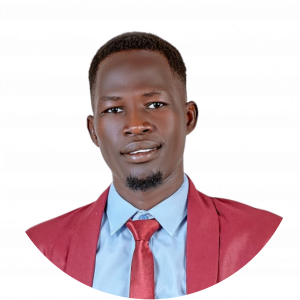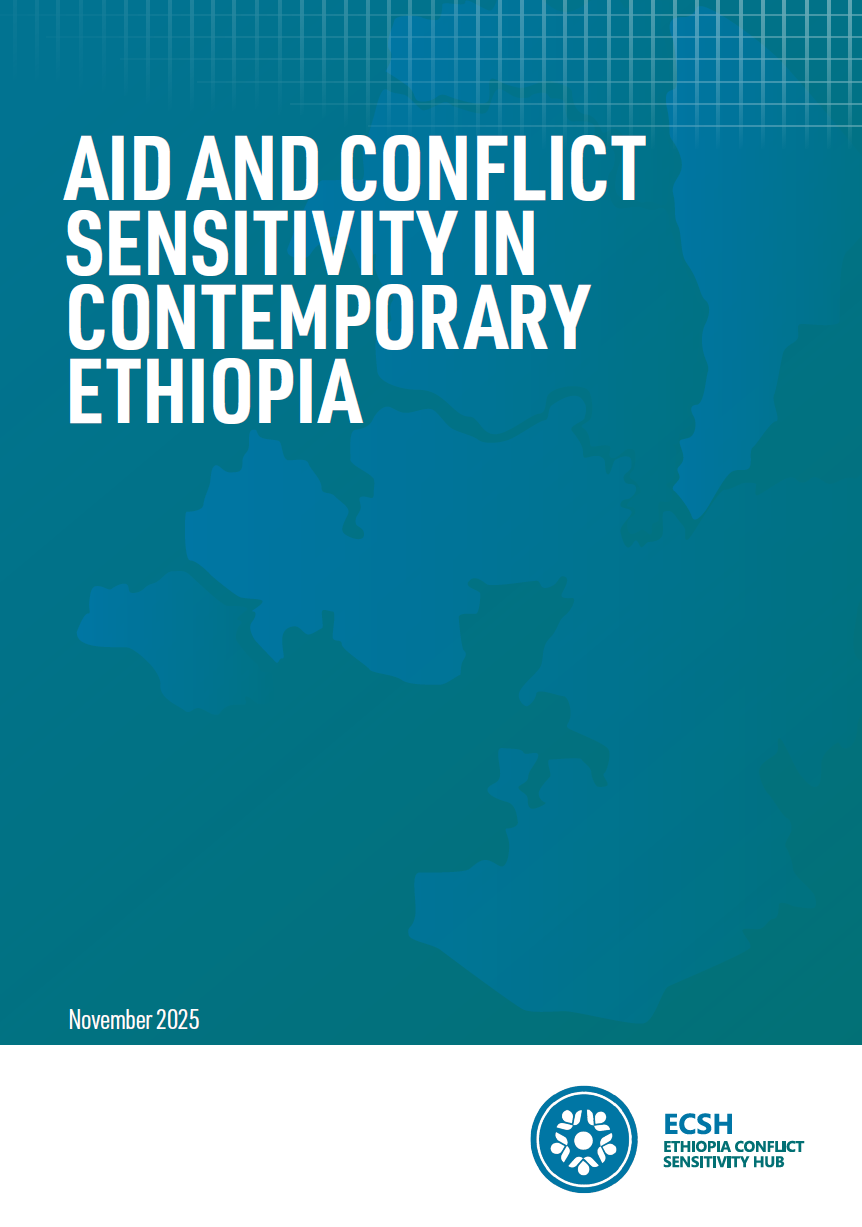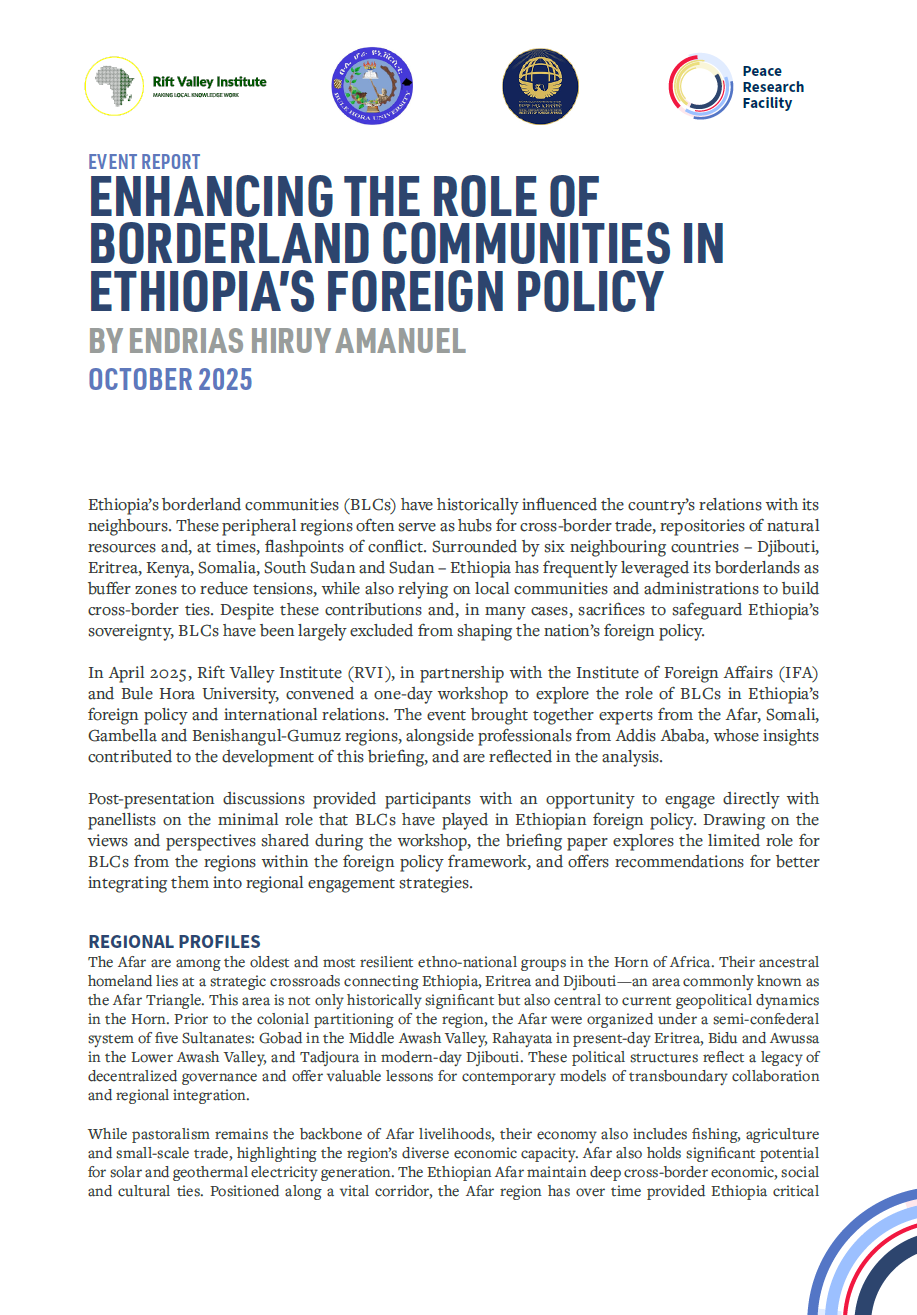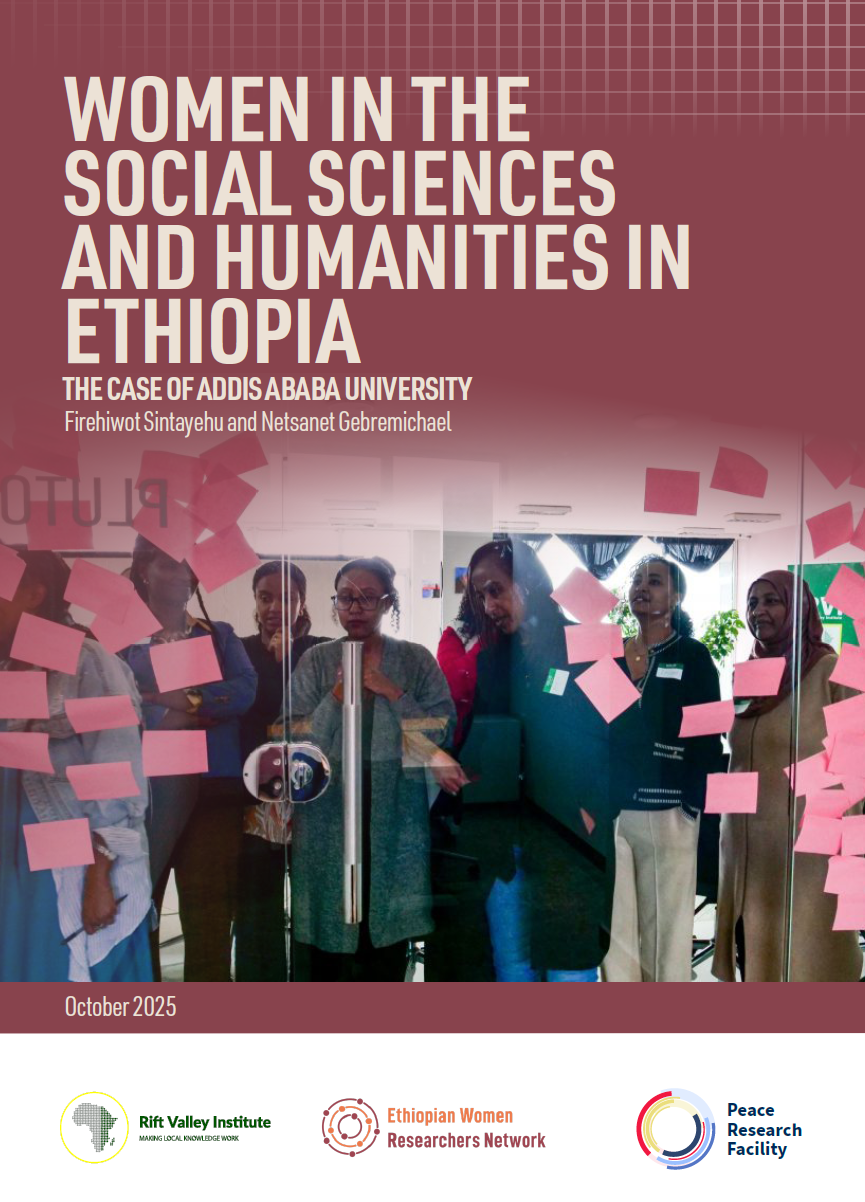This blog explores how water scarcity affects women and girls, especially in their daily tasks, safety and health in Kakuma refugee camp, which is located in Kenya’s hot and semi-arid Turkana region.
By Youniyas Abdurahman Seliman
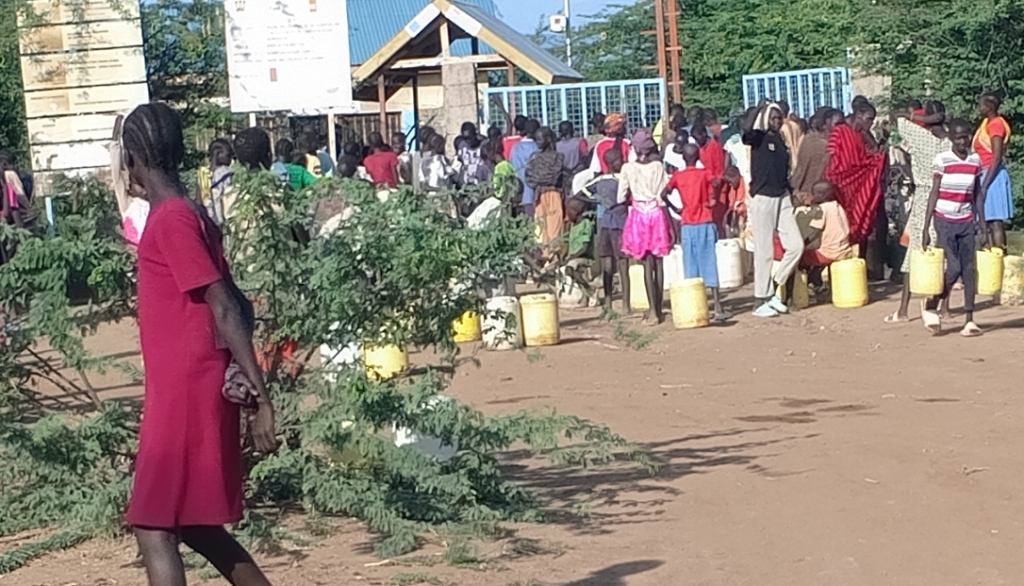
Introduction
As climate change and growing population density worsen water scarcity worldwide, many women are being forced to come up with strategies for water conservation and access. Water scarcity is forging a sense of competition and togetherness out of the daily hardships it causes. When women in Kakuma meet at water points, they vie for water but also improve their social connections and knowledge of the camp’s services. Mutual helpfulness, creativity and compassion help them survive.
The research for this blog focused on Kakuma’s administrative Sections 1, 2, 3 and 4, and the Blocks and Zones within them most affected by water scarcity. Cross-sectional, qualitative research was employed to assess gendered experiences of water shortages and use. Four focus group discussions were conducted among women of different ages, marital status, residency and household composition. Two focus group discussions were conducted among girls.
Fifty-two participants gave key informant interviews, 18 of them men. While men are not as heavily invested in obtaining water, their opinions are essential for analysing the division of labour and the social relationships that define refugee responses to water shortages. Many respondents said population pressure, longer dry seasons and irregular rainfall patterns were fast becoming factors in these shortages.
Direct observation of daily water collection activities was also carried out. A large number of people were observed around water sources where, despite disagreements, women converged and shared critical information, such as new developments in the Bamba Chakula food vouchers, issued by UN agencies to refugees in Kalobeyei settlement, 35 km from Kakuma.
Daily effect of water scarcity on women and girls
According to respondents, collecting water is considered women’s and girls’ business, the responsibility of mothers, wives or daughters.[1] Water is women’s work because women are in charge of washing, cooking and cleaning, said Maria Bulimwengu in Kakuma 4.[2] ‘They do not have an option on this one, it’s the norm, according to their cultures.’ [3] Even when other family members help, the duty is more often assigned to girls. ‘My sisters and I are the ones who take most of the turns,’ said Agnes Lanya in Kakuma 3.[4]
Time spent searching for water is time lost on education or generating income. Children miss classes to fetch water for washing their uniforms and taking showers. ‘My daughter loses time for school since she spends a lot of time fetching water,’ said one mother.[5] ‘I run a small shop,’ said another respondent. ‘But … getting water is very hard. You have to spend hours. … You close your shop. You look for water most of the time.’[6]
The time and energy used to acquire drinking, cooking, washing and bathing water is a challenge, particularly when infants need frequent changing and washing.[7] Maria said it meant walking for hours, with her baby on her back. Another resident, Nyanjiling Lueth, said: ‘It can take up to one to two hours to carry water for a family from the water sources point to home.’[8]
The task differs according to your dwelling area.[9] While some can get water within minutes, for others it takes 40 minutes to an hour. Proximity does not mean collecting enough water, though, as the pressure can be poor and its duration short. ‘I get water at the tap but, though it’s only ten minutes away, the water is never enough,’ said Flora Aowuja, a resident of Kakuma 3.[10] Taps run dry when the pipes between boreholes and collection tanks burst during flash floods along seasonal riverbeds.
Many women think there is too little water to go round anyway and that water levels underground appear to be dropping.[11] ‘We draw water in the morning and the evening, and [we] rarely find water in the taps. Most of the time, we proceed to Kakuma 1 boreholes,’ said Maryam Ayub in Kakuma 3.[12] Women point out that the scarcity of water triggers threats and violence among them. ‘They [women] do anything to … have their share of water,’ for their loved ones, said one woman.[13]
Women and girls walk in groups to avoid attack and to reach water points early.[14] ‘We get beaten up by robbers when we go looking for water at isolated places. Some women have been raped,’ said Mary Lonya in Kakuma 3.[15] One woman said she felt she had been attacked at a water point ‘because I was alone and far from home’.[16] The threat of being robbed means they leave their phones behind. As they wait in line, jerrycans and wheelbarrows go missing. Nonetheless, they feel they cannot go home empty-handed. ‘Looking for water is not a fight for mere healthy water, it is a fight for survival and humanity’, said one resident.[17]
Physical and emotional toll
For refugees, finding water is a constant pursuit that takes place even under a strong sun, and the physical suffering of doing so is real. The water is not always clean; children wake up with stomach upsets.[18] The strain of carrying it takes a toll on people’s health, causing chest and joint pains.[19] Skin infections flare up when there is not enough water to wash.[20] The water crisis affects people’s psychological well-being, with the anxiety of not knowing when and where you will find water next, a constant source of stress and fatigue. The dry seasons are especially harsh.
Kakuma’s communities need a sustainable solution, with more boreholes, taps and tanks. Though there are two to three taps per Block, each with enough for 12 to 14 households, the population is not necessarily the same in each Block. Water infrastructure in the camp is dilapidated, with pumps broken and too few pipes to cater for increasing numbers of people.
The scarcity of water has created a market for it, turning the shortages into an opportunity. Water collection is a business for Ahmad, a Sudanese refugee living in Kakuma 3, who sells it to hotels, households and shopkeepers: ‘During times of difficulty, I get many customers’, he says. A 20-litre jerrycan fetches KES 30 (about USD 0.23), though it varies. ‘In another place, I sell 20 litres of water at KES 50’. With more competitors, however, his income has fallen from KES 2,000-3,000 to KES 1,000-2,000 per day.[21]
Positive side-effects
This blog also deals with positive adaptation to water scarcity, the voices of women providing an opportunity to understand resourcefulness, compassion and resilience. ‘This has helped shape their attitude to [make them] appreciate every single drop,’ said Nyadeng in Kakuma 4.[22] Today, the majority of women are preserving water.[23] As one woman put it, ‘in a way that benefits everyone at my home’.[24]
Much of the information shared at water points involves its storage and reuse; after washing kitchen utensils, for example, many women use the same water for mopping the floor or watering the kitchen farm. Women have bought containers to stock up.[25] Smaller, 5-litre containers encourage more equitable rationing within families.[26] Social networks have grown between women from different areas of the camp. ‘By the time I get there, they just assist me with the water and hence we are friends,’[27] said Farhiya Ahmed in Kakuma 3. ‘When we are in groups, we move, and if one gets water … you know, we share,’[28] said Hannah Mohammed, who also lives in Kakuma 3.
When it rains, refugees gather rainwater to use for tasks like laundry.[29] Men help most often ‘fetching water during community celebrations. … While they are busy carrying water from its sources, we are busy preparing food, cleaning the compound, and keeping everything organized.’[30]
Conclusion
The stories of women refugees illustrate how the absence of this basic resource intersects with not only their physical but their social and emotional selves. In conclusion, while water scarcity in Kakuma is huge in scale and the impact it has on women’s lives is substantial, women have responded with ingenuity and solidarity. By using water economically, women have found ways to adjust and forge friendships that help them bear the harsh conditions under which they live.
This blog recommends that the universal right to clean, sustainable water and sanitation, enshrined in the United Nations’ 2030 Sustainable Development Goals, should be aligned with women’s experiences. For women refugees in Kakuma, water scarcity is not only a resource management issue but has other dimensions, ones where human resilience and community interconnect to create simple solutions.
About the author
Youniyas Abdurahman Seliman holds a Diploma in Social Work and Community Development. He has a proven track record in community development, child protection, climate education and peacebuilding in Kakuma. He is currently the programme manager for the Inspire for Change Initiative (ICI) in Kakuma refugee camp, and he works at BOMA LIFT NK Incentive Mentor, where he mentors business groups and saving groups. Additionally, Youniyas serves as a reporter for the Refugee Sports Network.
Acknowledgements
This blog has been published as a result of Youniyas’s training with the Rift Valley Institute’s (RVI) Research Communities of Practice (RCoP) project, a partnership carried out with funding from the Open Society University Network Hubs for Connected Learning Initiatives. It therefore reflects the views of the author and not the views or position of the Rift Valley Institute. RCoP is among several RVI flagship projects that support the professional development of early career scholars in eastern and central Africa through training, mentorship and the dissemination of research outputs. It is a values-driven project based on RVI’s long-term experience and presence in the region, built around a community of practitioners and academics with a common interest in the professional development of early career researchers. In the third phase of the project, RVI trained seven early career scholars from Kakuma refugee camp between May and October 2024.
This blog was edited by Catherine Rosemary Bond.
[1] Interview with Amina Ayub Yunis, Kakuma 3, 31 August 2024.
[2] interview with Maria Bulimwengu, Kakuma 4, Zone 1, 23 August 2024.
[3] interview with Maria Bulimwengu, Kakuma 4, Zone 1, 23 August 2024.
[4] Interview with Agnes Lanya, Kakuma 3, 26 August 2024.
[5] Participant in a Focus Group Discussion, Kakuma 2, 21 August 2024.
[6] Participant in a Focus Group Discussion, Kakuma 2, 31 August 2024.
[7] Focus group discussion, Kakuma 2, 25 August 2024.
[8] Interview with Nyanjiling Lueth, Kakuma 3, 31 August 2024.
[9] Interview with Janet Najat, Kakuma 3, 19 August 2024.
[10] Interview with Flora Aowuja, Kakuma 3, 31 August 2024.
[11] Interview with Ayei Maryen, Kakuma 3, 31 August 2024.
[12] Interview with Maryam Ayub, Kakuma 3, 19 August 2024.
[13] Interview with Nadia Marceline, kakuma 3, 19 august 2024.
[14] Interview Aban Reth, Kakuma 3, 27 August 2024.
[15] Interview with Mary Lonya, Kakuma 3, 26 August 2024.
[16] Interview Carlina Deng, Kakuma 4, 27 August 2024.
[17] Interview Anyiel Mony , Kakuma 4, 27 August 2024.
[18] Focus group discussion, Kakuma 3, 25 August 2024.
[19] Interview with Samira Hamda, Kakuma 4, 28 August 2024.
[20] Interview Aliza Louis, Kakuma 2, 29 August 2024.
[21] Interview with Ahmad, Kakuma 3, 3 September 2024.
[22] Interview with Nyadeng, Kakuma 4, 20 August 2024.
[23] Interview with Sarah, Kakuma 3, 28 August 2024.
[24] Interview with Maombi, Kakuma 3, 25 August 2024.
[25] Focus group discussion, Amal Al-Amin, Kakuma 3, 25 August 2024.
[26] ‘Managing Environmental Stress in Kenya’s Kakuma Refugee Camp’, UNEP. Accessed 20 August 2024, https://www.unep.org/news-and-stories/story/managing-environmental-stress-kenyas-kakuma-refugee-camp; ’Water Scarcity in Kakuma Refugee Camp’, Norwegian Refugee Council. Accessed 20 October 2024, https://www.nrc.no/feature/water-scarcity-in-kakuma-refugee-camp/.
[27] Interview with Farhiya Ahmed, Kakuma 3, 21 August 2024.
[28] Focus group discussion, Hannah Mohammed, Kakuma 3, 25 August 2024.
[29] Interview with Nema Mohammed, Kakuma 2, 21 August 2024.
[30] Interview with Samira Kuku, Kakuma 2, Block 7, 21 August 2024.

